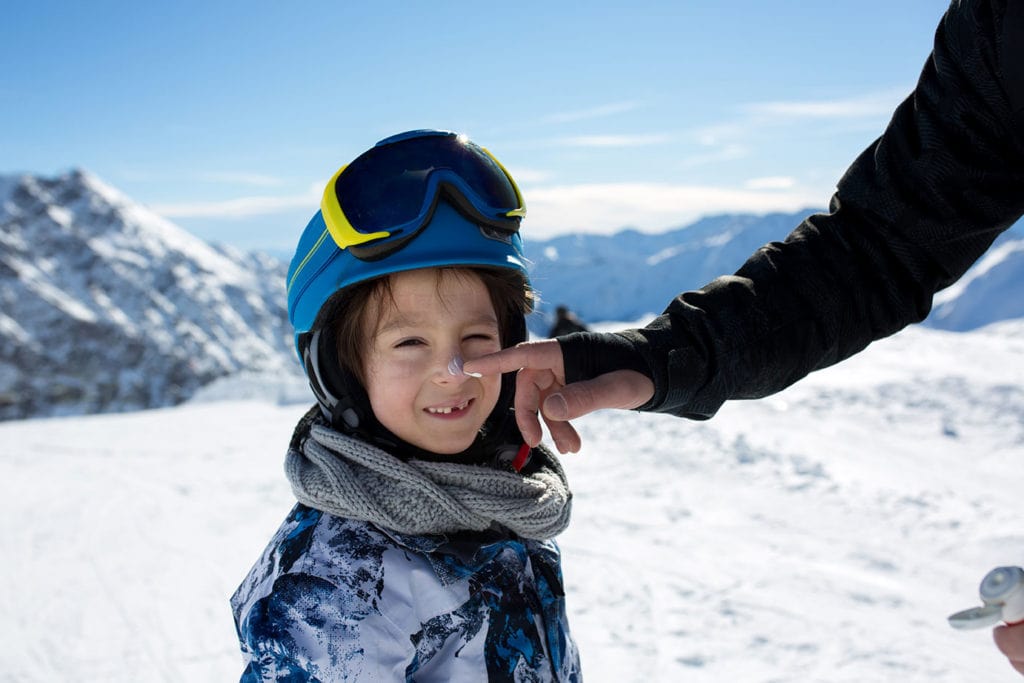
Sun protection whilst skiing
Most people don’t realise they are at greater risk of UV damage while skiing than when on the beach. On the slopes, the skin is exposed to high levels of UV light, absorbing both the direct UV rays from the sun and the UV rays reflected off the snow.
Reasons why UV damage is greater
There are two main reasons why UV damage is greater when skiing. Firstly, the higher altitude of the alpine region means you are closer to the sun’s rays. The atmosphere is also thinner than at ground level, which means there is less pollution to filter out UV radiation.
Secondly, because the snow reflects 85% of UV rays even on cloudy days, there is risk of sun burn in unusual areas of the body, such as the underside of your chin, scalp and behind the ears.
The link between sun exposure and skin cancer
Over 100,000 new cases of skin cancer are diagnosed in the UK every year. More than 90% of all cases of skin cancer are associated with sun exposure.
Tips to prevent sunburn
If you’re heading to the slopes this winter it’s important to use sun protection. Here are some recommendations:
- Use sunscreen with a minimum SPF of 30. A sunscreen with glycerin or lanolin will also help protect the skin from harsh cold and wind.
- Apply sunscreen 30 minutes before hitting the slopes
- Carry a travel sized sunscreen with you and reapply every couple of hours
- Cover up as much as possible. Wearing a face mask, long sleeves and gloves will keep your skin warm and protected from overexposure
- Skiing off peak, before 10am or after 4pm, will help avoid long queues and the strongest UV rays